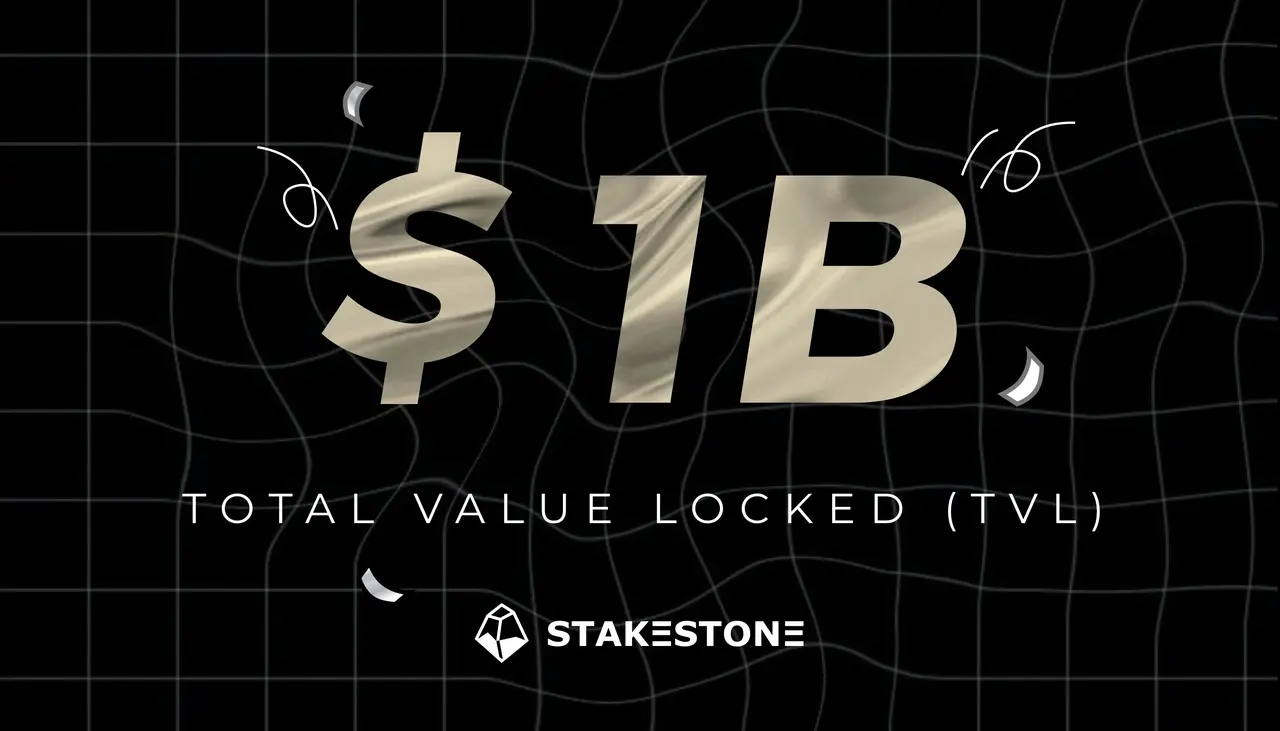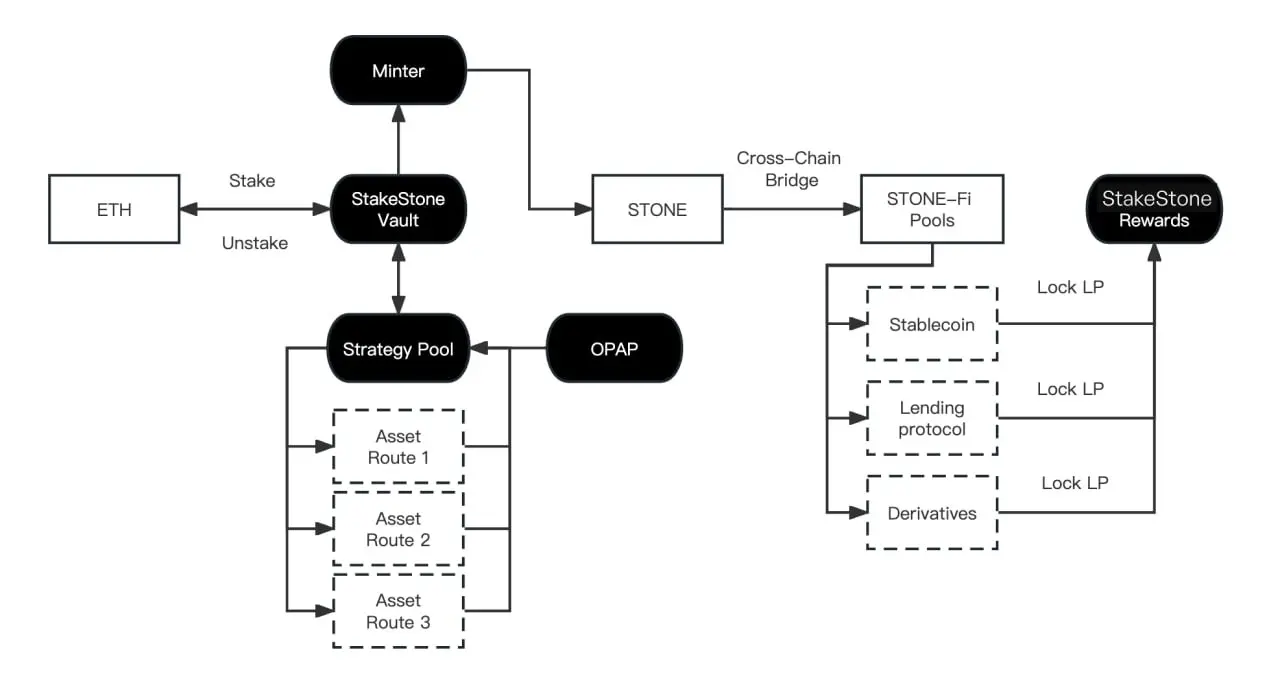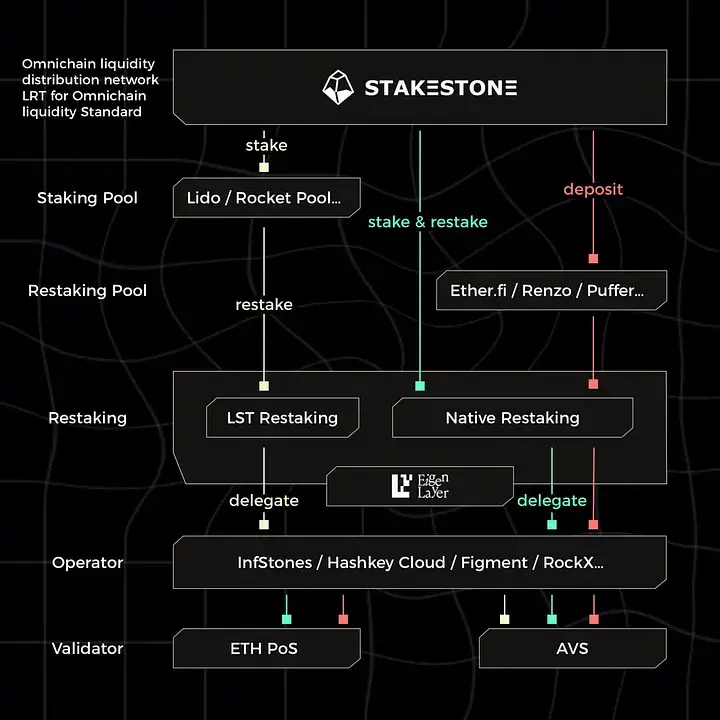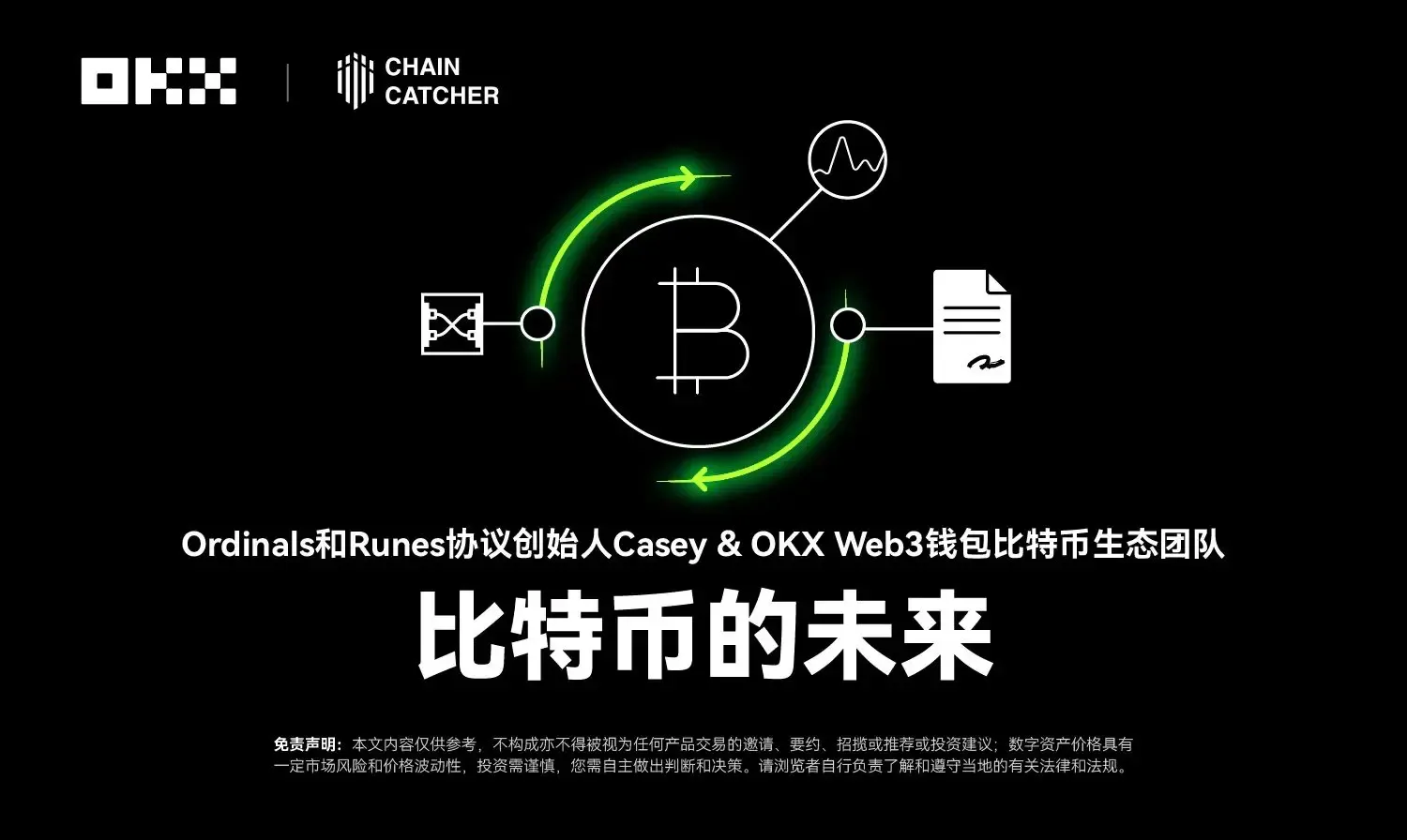TVL breaks 1.2 billion USD, receives investment from Binance and OKEx: Can StakeStone become a new cross-chain star?
Recently, the StakeStone project has garnered attention in the blockchain community due to investments from Binance Labs and OKX Ventures. StakeStone is not only committed to making its STONE token a new standard for cross-chain liquidity assets but is also building a brand new application layer liquidity market. In this market, on February 26, its total value locked (TVL) for the full-chain LST protocol surpassed $1 billion, reaching an astonishing $1.2 billion by March 26.

As a participant in the liquid staking sector, StakeStone's application in DeFi and Ethereum Layer 2 solutions is particularly crucial. Compared to other projects in the same sector like Lido and Rocket Pool, StakeStone offers users a broader range of application scenarios and yield opportunities through its cross-chain liquidity market and innovative OPAP mechanism, showcasing its unique market positioning.
Next, we will delve into StakeStone's technical architecture and how it stands out in the competitive liquid staking market.
Analyzing StakeStone's Core Advantages: Non-Custodial and Transparent Liquid Staking Services Ensure User Fund Security
StakeStone aims to provide innovative liquid staking solutions for the decentralized finance (DeFi) ecosystem. By introducing the concept of Yield-bearing ETH, StakeStone allows users to maintain asset liquidity while enjoying staking rewards. Its cross-chain compatibility and automatic yield optimization mechanism (OPAP) further enhance its application potential in a multi-chain ecosystem, providing users with an efficient, flexible, and yield-maximizing staking platform.
StakeStone's core advantage lies in its innovative technical architecture and user-centric design philosophy. By offering non-custodial and transparent liquid staking services, StakeStone ensures the security of user funds and the transparency of yields. Its LayerZero-based STONE token enables cross-chain liquidity, allowing assets to flow freely between different blockchain networks, which not only opens up broader market opportunities for users but also simplifies the integration process for Layer 2 developers.
In terms of operation, StakeStone allows users to stake ETH or other supported assets into its protocol, which are then converted into corresponding Yield-bearing ETH or other forms of LST, representing the user's staked assets and corresponding rights to yields. Through the OPAP mechanism, StakeStone can automatically adjust and optimize the allocation of underlying assets in response to market changes and the performance of staking pools, ensuring users receive the best staking yields. Meanwhile, the yield distribution mechanism ensures that staking rewards (including transaction fees, governance rewards, etc.) are regularly distributed to STONE holders, whether through direct token distribution or in the form of increased STONE value.

In summary, StakeStone, through its innovative solutions and technical advantages, not only addresses the issue of asset liquidity loss during crypto asset staking but also provides an efficient solution for cross-chain asset management, significantly promoting the development of DeFi and cross-chain liquidity.
Re-staking Strategy Can Fully Enhance StakeStone's Capital Operation Efficiency, Allowing Users to Access More Staking Opportunities
StakeStone is revolutionizing the crypto asset staking field by introducing EigenLayer re-staking technology, aiming to enhance the capital efficiency and security of the entire ecosystem. By implementing solutions including LST re-staking, Beacon chain re-staking, and LRT integration, StakeStone aims to provide its users and partners with a secure and efficient re-staking platform. The development of this strategy benefits from collaboration with InfStones, which provides professional node operation services for StakeStone, while Cobo's advanced security technology offers solid support for the stability of the entire system. Additionally, the underlying assets updated through the OPAP mechanism, combined with community voting features, not only enhance the project's transparency but also promote community participation and governance.
The core of the re-staking strategy lies in its significant improvement of capital efficiency. By allowing assets to participate in more staking opportunities while maintaining original staking yields, StakeStone effectively addresses the liquidity constraints of traditional staking models. Furthermore, this strategy automates the re-staking process through smart contracts, ensuring the security and efficiency of the process. For the redistribution of ETH, the strategy adopts a gradual approach to mitigate the impact of the initial cold start period on the speed of reward acquisition. The distribution mechanism for re-staking rewards emphasizes fairness, ensuring that participants' efforts are reasonably rewarded through EigenLayer point accumulation and distribution strategies.

However, the re-staking strategy also presents some challenges, particularly regarding the withdrawal mechanism. Due to the complexity of the involved technologies and processes, the processing time for withdrawal requests may be extended, especially during periods of high system pressure. To address this issue, StakeStone is developing more flexible and efficient solutions to reduce withdrawal waiting times while ensuring the liquidity and stability of the entire system.
Through these innovative measures, StakeStone not only enhances the capital efficiency of staked assets but also brings new development directions to the crypto asset staking field. With continuous technological improvements and deeper community participation, StakeStone is expected to play a greater role in promoting crypto asset liquidity and optimizing staking yields.
Overview of StakeStone Carnival Activities, See If There Are Wealth Opportunities for You
StakeStone has announced the launch of a series of full-chain carnival activities, aiming to promote community participation by allocating over 6.5% of the total supply as rewards. The activities are divided into several phases, with the first wave lasting four days, offering a 15% additional reward to early account activators.

Details of the First Wave Rewards:
- Goal: Encourage deposits of STONE and invite friends;
- Prize Pool: 3% of StakeStone's total supply;
- Special Offer: Early account activators can enjoy a 15% reward boost;
- Limit: The activity stops when cumulative deposits reach 200,000 STONE;
- Operation: Activate the carnival account by obtaining an invitation code and deposit STONE to participate.
Details of the Second Wave Rewards: - Goal: Enhance the cross-chain utility and capital efficiency of STONE;
- Collaboration: Partnering with over 10 chains, ecosystems, and protocols;
- Rewards: Distribution of the second wave prize pool and additional rewards based on STONE usage;
- Team Expansion: Participants from the first wave can continue to use invitation codes to expand their teams, enjoying an additional 5% reward boost.
Loyalty Reward Details:
A special allocation of 0.5% of the total supply as a prize pool to reward community veterans such as participants of Manta New Paradigm, Merlin's Seal, B² Buzz, and G-NFT. Through this series of activities, StakeStone aims not only to incentivize broad community participation but also to actively expand its application and influence in the crypto ecosystem.
A Series of Processes Seem Smooth, but StakeStone's Future Development Still Requires Cautious Observation
On March 26, StakeStone, in partnership with blockchain infrastructure provider InfStones, announced that the two companies have reached an important strategic cooperation. The highlight of this collaboration is the integration of EigenLayer re-staking technology, an innovative step aimed at enhancing AVS operational strategy cooperation. On that day, the amount of Ethereum (ETH) staked on the StakeStone platform had already reached an impressive 350,000, with a total locked value (TVL) of as high as $1.24 billion.
StakeStone has accumulated over 340,000 ETH through close cooperation with the ETH and BTC ecosystems and other emerging ecosystems, participating in liquidity distribution activities involving over 100,000 users. The project is also exploring the introduction of STONE BTC, intending to further enhance the diversity and attractiveness of its liquidity distribution network.
After securing strategic investments from Binance Labs and OKX Ventures, StakeStone's market position has become more solid. These developments not only highlight StakeStone's efforts in advancing the frontier of crypto asset liquidity but also add confidence to its long-term growth and success in the global blockchain ecosystem. As more collaborations unfold and incentive programs are implemented, StakeStone is actively shaping a more open and diverse crypto financial world. However, whether it can sustain success and achieve its ambitious goals remains to be seen over time.










